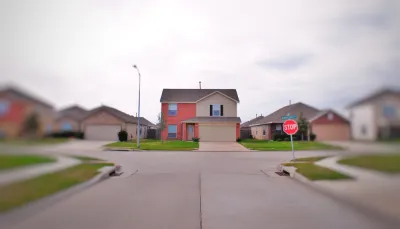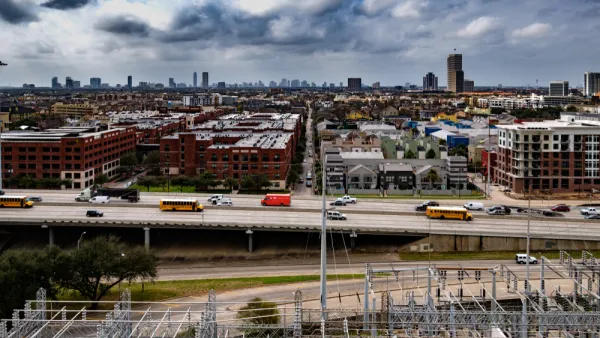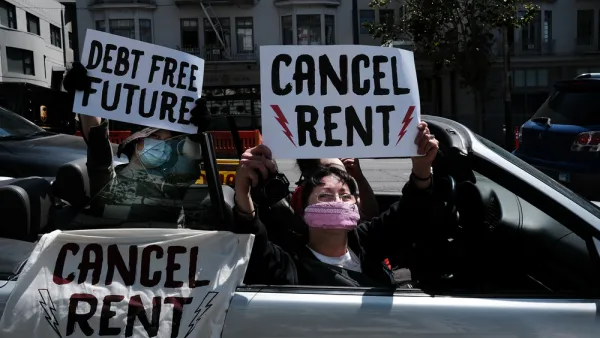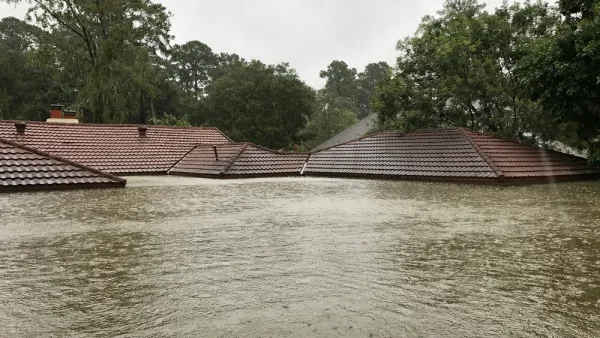Overcrowding and housing insecurity among Black and Brown communities led to disproportionately high COVID-19 fatalities, research shows.

Data from the Kinder Institute for Urban Research's 2021 State of Housing report "suggest a reason for the racial/ethnic differences in who COVID-19 killed," reports Stephen Averill Sherman. That reason: overcrowded housing. "[A]s scientists built knowledge of COVID-19’s spread, they learned that one needed more than a quick on-the-sidewalk encounter with an infected person to catch the disease. One needed to spend extended periods of time indoors with someone harboring the virus."
According to research from New York University's Furman Center, "it wasn’t necessarily population density but housing crowding that accelerated the virus’s contagion." Housing insecurity exacerbated by the pandemic increased overcrowding at the worst possible time. "[I]n Harris County, Hispanic-headed households are about 10 times more likely to be overcrowded than white non-Hispanic-headed households (10.9% vs. 1.2%). Black- and Asian-headed households are in the middle (4.3% and 4.9%, respectively). Hispanic Houstonians were also the ethnic/racial group with the most outsized death share from COVID-19."
Additionally,
[t]he types of jobs with high COVID-19 fatalities—construction, food preparation, health care support—are often done by Black and Brown Houstonians. The most recent ACS data show that working-age Black Harris County residents fill 48% of health care support positions despite being 20% of the population. Per 2018 Census department data quoted in a Houston Chronicle story, Hispanic Harris County residents represent 50% of its food service workers and 81% of its construction workers.
Sherman argues that the disproportionate rate of COVID-19 deaths in Houston's low-income households could have been reduced by more effective use of resources such as expanded unemployment benefits, more robust rental assistance, and hotel rooms where those diagnosed with COVID-19 could safely quarantine. "[O]ne lesson learned," Sherman writes, "is that while we share a lot of air with our coworkers and housemates, we are not all in this together."
FULL STORY: Houston had an overcrowding problem at precisely the wrong time: during a pandemic

National Parks Layoffs Will Cause Communities to Lose Billions
Thousands of essential park workers were laid off this week, just before the busy spring break season.

Retro-silient?: America’s First “Eco-burb,” The Woodlands Turns 50
A master-planned community north of Houston offers lessons on green infrastructure and resilient design, but falls short of its founder’s lofty affordability and walkability goals.

Delivering for America Plan Will Downgrade Mail Service in at Least 49.5 Percent of Zip Codes
Republican and Democrat lawmakers criticize the plan for its disproportionate negative impact on rural communities.

Test News Post 1
This is a summary

Test News Headline 46
Test for the image on the front page.

Balancing Bombs and Butterflies: How the National Guard Protects a Rare Species
The National Guard at Fort Indiantown Gap uses GIS technology and land management strategies to balance military training with conservation efforts, ensuring the survival of the rare eastern regal fritillary butterfly.
Urban Design for Planners 1: Software Tools
This six-course series explores essential urban design concepts using open source software and equips planners with the tools they need to participate fully in the urban design process.
Planning for Universal Design
Learn the tools for implementing Universal Design in planning regulations.
EMC Planning Group, Inc.
Planetizen
Planetizen
Mpact (formerly Rail~Volution)
Great Falls Development Authority, Inc.
HUDs Office of Policy Development and Research
NYU Wagner Graduate School of Public Service





























